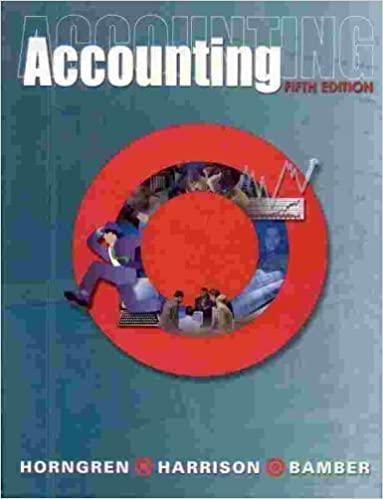John Menard is the founder and sole owner of Menard, Inc. Analysts have estimated that his chain
Question:
John Menard is the founder and sole owner of Menard, Inc. Analysts have estimated that his chain of home improvement stores scattered around nine midwestern states generate about $3 billion in annual sales. But how can Menard compete with giant Home Depot? Suppose Menard is trying to decide whether to invest $45 million in a state-of-the-art manufacturing plant in Eau Claire, Wisconsin. Menard expects the plant would operate for 15 years, after which the plant would have no residual value. The plant would produce Menard's own line of Formica countertops, cabinets, and picnic tables. Suppose Menard would incur the following unit costs in producing its own product lines: Per Unit Countertops Cabinets Picnic Tables Direct materials Direct labor... $15 $10 $30 10 5 20 Variable manufacturing overhead........ 5 2 7 Rather than making these products, assume Menard could buy them from outside sup- pliers. Suppliers would charge Menard $40 per countertop, $25 per cabinet, and $75 per pic- nic table. Whether Menard makes or buys these products, assume that he expects the following annual sales: Countertops-487,200 at $130 each Picnic tables-100,000 at $225 each Cabinets-150.000 at $75 each If "making" is sufficiently more profitable than outsourcing these products, then Menard will build the new plant. John Menard has asked your consulting group for a recommenda- tion. Menard uses a 14% discount rate and the straight-line depreciation method. Required 1. Are the following items relevant or irrelevant in Menard's decision to build a new plant that will manufacture his own products?
a. The unit sale prices of the countertops, cabinets, and picnic tables (the sale prices that Menard charges its customers)
b. The prices outside suppliers would charge Menard for the three products, if Menard decides to outsource the products rather than make them
c. The $45 million to build the new plant
d. The direct materials, direct labor, and variable overhead Menard would incur to man- ufacture the three product lines
e. Menard's salary 2. Determine whether Menard should make or outsource the countertops, cabinets, and pic- nic tables, assuming that the company had already built the plant and therefore has the manufac turing capacity to produce these products. In other words, what is the annual difference in cash flows if Menard decides to make rather than outsource each of these three products? 3. In requirement 2. you computed the annual difference in cash flows if Menard decides to make rather than buy the three products. To analyze the investment in the plant relative to the alternative of outsourcing the products, use this difference in annual cash flows to compute the following for the investment in the new plant:
a. Payback period
b. Accounting rate of return
c. Net present value
d. Internal rate of return (Hint: Base the benefit side of your computations on the difference in annual cash flows you. computed in requirement 2. nor the total expected cash flows from building the plant.) 4. Write a memo giving your recommendation to John Menard. The memo should clearly state your recommendation, along with a brief summary of the reasons for your recom- mendation. Use the memo format outlined in Daily Exercise 26-5.
Step by Step Answer:

Accounting
ISBN: 9780130906991
5th Edition
Authors: Charles T. Horngren, Walter T. Harrison, Linda S. Bamber, Betsy Willis, Becky Jones





